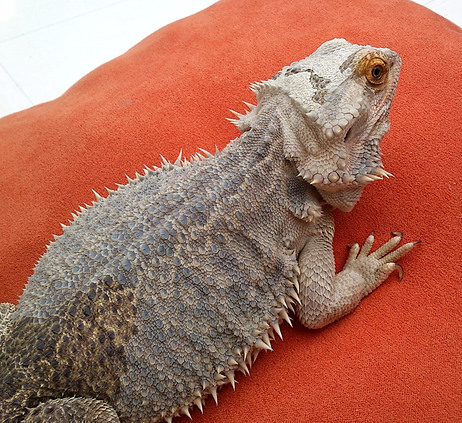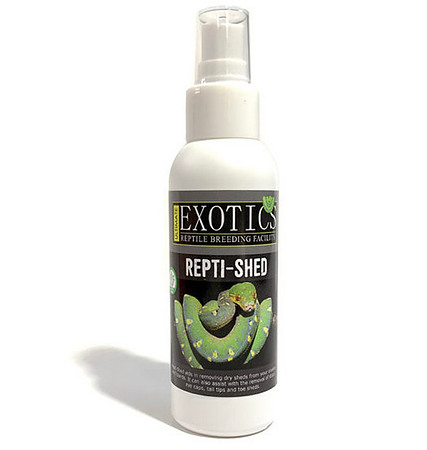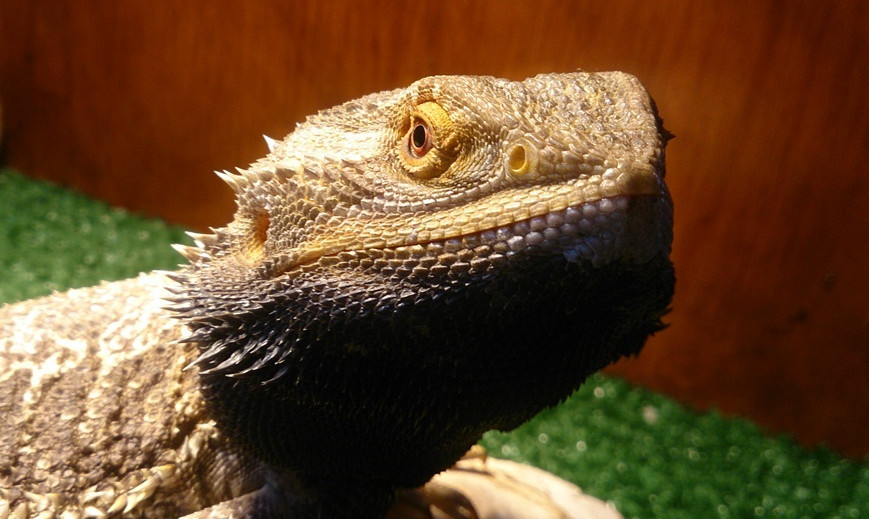Bearded Dragons will Shed all their lives, especially when growing and developing well. Signs of a shed are always a good indication, it tells you that your beardie is growing and getting rid of old skin.
Bearded Dragon Shedding – What are the Signs?
- Their skin will change color, turning dull and grey/white.
- Eye bulging to loosen the old skin around the eyes.
- Loss of appetite. Bearded dragons will reduce their food intake during a full shed.
- Grumpiness – Some dragons can become hissy or cranky during shedding and would not like being touched. This is normal, but do not avoid bath time.
- Rubbing – They will rub themselves against any handy surface to get rid of old skin including you.

What do you do when your bearded dragon is shedding?
Bath your bearded dragon once a day for at least 15 minutes at a time. This will help to loosen old skin. In between baths, you can also spray them with water.
For tough sheds, I recommend using a moisturizing spray to help lift the old skin. It can be applied after a bath by gently rubbing it on the old skin. 
Do not pull the skin off! – Peeling of skin that is not ready to come off will damage the new scales that are developing. Bearded dragons will rub themselves against stuff to get rid of old skin.
The skin on the tip of the tail, toes, and feet is sometimes stubborn to come off and may restrict blood supply, resulting in killing the tissue. In such instances, longer baths and a shedding aid will be necessary to remove the old shed.
The retained shed can also be treated by wrapping your wet bearded dragon in a warm damp towel after a bath. Work on the affected parts by rubbing them gently.
Skin in and around the nostrils is the most stubborn to come off. If you notice dry skin sticking out of their nose, you can gently pull it out, if it is loose. If the skin is still stuck, leave it for a day before trying again.
If all the above methods do not get rid of old skin or there are multiple layers of skin that failed to shed completely, it would be best to seek veterinary help to resolve the problem.
Do Bearded Dragons Stop Eating When They Shed?
When bearded dragons start shedding, they will not lose their appetite until the old skin starts to come off. Since loose skin agitates them and they feel itchy the entire time, they will lose interest in food until near the end of the shed or until a day, maybe two after they are done shedding. If appetite loss continues after a shed, consult with a vet.
How Long Does Bearded Dragon Shedding Last?
The time it takes for a dragon to shed varies on a few things like, how much of the body is shedding, which parts of the body are shedding, their bath times, and so forth. A full body shed, with regular baths can take up to 3 weeks, again depending on the size of the beardie and so forth. Most sheds tho, last only a week to 10 days.
Should You Help a Bearded Dragon Shed?
When a bearded dragon sheds, he/she should be left and not helped unless completely necessary. If you really want to help, more regular bath times and a rub with easy-shed can do wonders and they will thank you for it. peeling of the skin and so on can injure your dragon which is why they should not be helped in this manner. Sometimes they will have an itch that they cannot scratch and you can help them by stroking the area that is itchy, Be warned that they will sometimes lean into this or start using you as a scratch post and this is completely normal.

Does the Humidity Need to be Higher During a Shed?
The humidity of your bearded dragon’s cage should always be between 35% and 40%, no matter if they are shedding or not. The only time the humidity should be changed is when they have certain illnesses and diseases, which will be recommended by a vet. Rather give them a longer or extra bath.
Do Bearded Dragons Need a Humid Hide During a Shed?
Absolutely not! Giving your bearded dragon access to high-humidity areas, even just a humid hide can lead to all kinds of illnesses and diseases, especially respiratory infections, which can turn fatal quite quickly. Rather spray them with water every now and then to make the shedding process easier on them.
